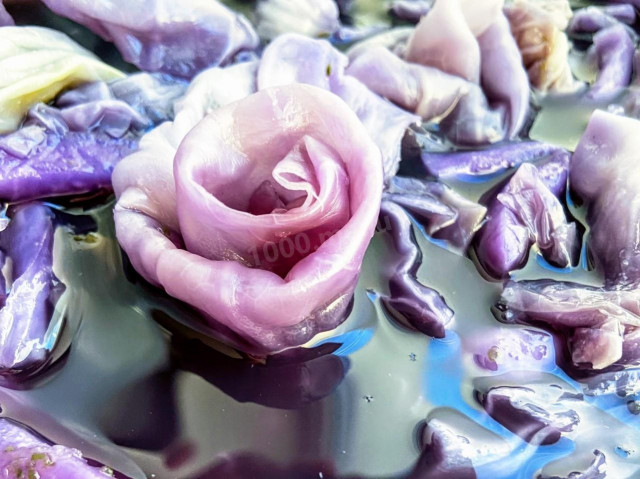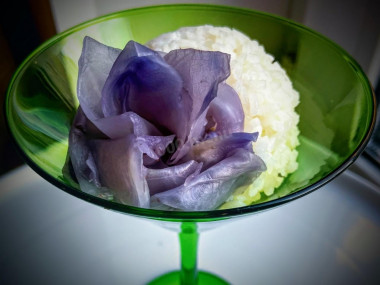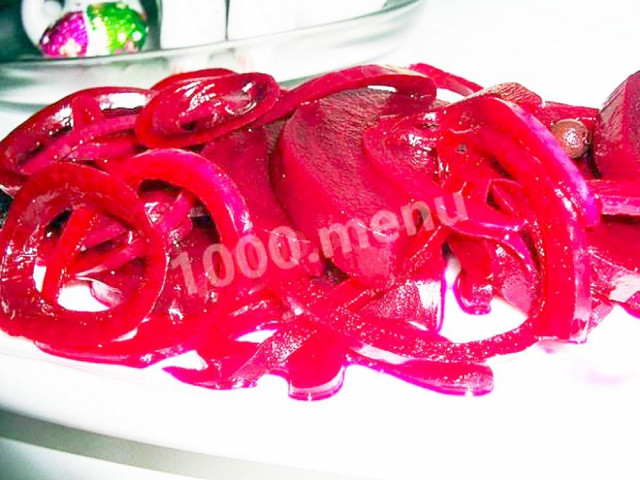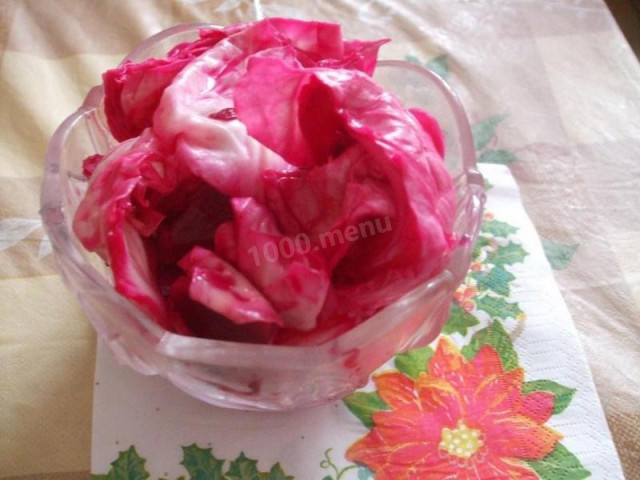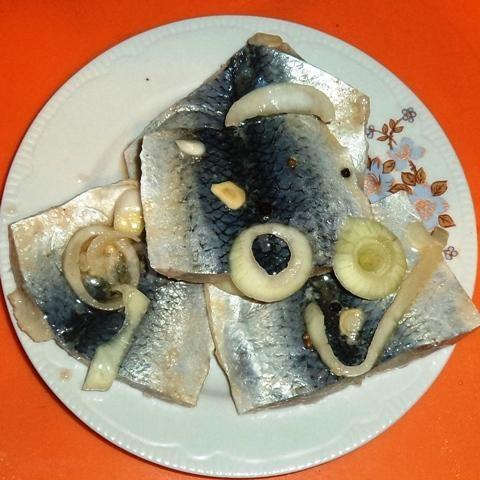Composition / ingredients
Step-by-step cooking
Step 1:
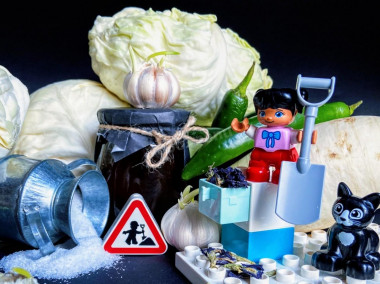
Prepare the initial products. Clean the cabbage from the stalk, remove the leaves with dark spots - they can lead to rot and spoil everything. Peel the daikon and garlic. Wash the chili peppers, cut off the stalks. Weigh the required number of flowers of the clitoris. Boil the water.
Step 2:
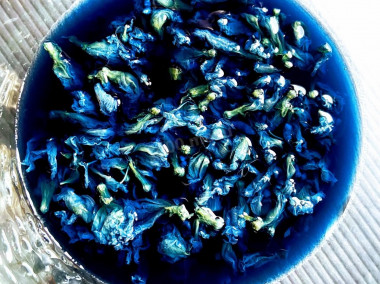
Pour boiling water over the flowers of the clitoris, boil over low heat for 15 minutes. Leave the broth to infuse under a closed lid.
Step 3:
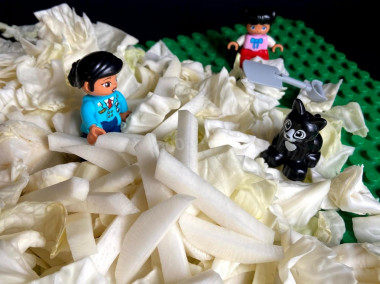
Meanwhile, chop the cabbage. If the cabbage is early - with large checkers, cut the coarse leaves smaller. Cut the daikon into cubes.
Step 4:
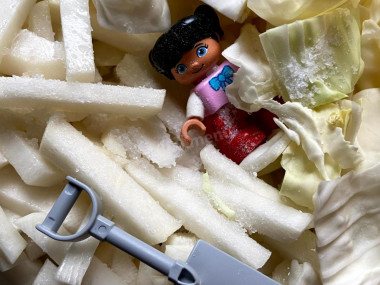
Put the cabbage and daikon in a container for pickling, add salt, as follows, mash to soften the fiber of the cabbage, set aside to let the juice for further softening.
Step 5:

Put garlic, coarsely chopped chili peppers and honey in a blender.
Step 6:

Grind the dressing to a homogeneous puree-like mass.
Step 7:
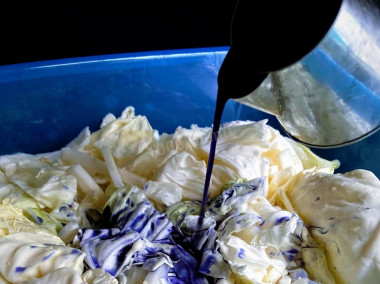
Pour cabbage with daikon decoction of the clitoris.
Step 8:
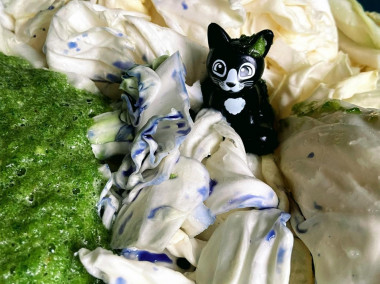
Add chili dressing with garlic and honey to cabbage with daikon.
Step 9:

Mix everything properly. Cover with a lid or a plate of a smaller diameter than the main container, set the pressure, cover with a towel. Leave the cabbage to ferment at room temperature for 3-4 days, stirring daily.
Step 10:
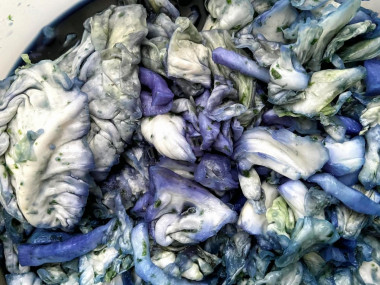
2nd day. The appearance of purple color indicates the beginning of fermentation, in which anthocyanins in an acidic environment change color from blue to purple. Mix it up.
Step 11:
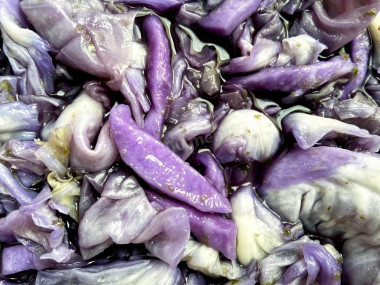
3rd day. It's worth trying brine, maybe you should add honey or pepper for sharpness. Additional salt can stop the fermentation process. By the third day, a persistent aroma of cabbage appears, which is compared with the smell of a gas leak. Everything is fine and going according to plan).
Step 12:
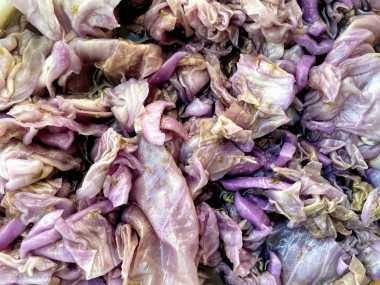
4th day. You can try cabbage. If everything suits your taste, you can put the cabbage in cans or airtight containers, fill with brine, and put it in the refrigerator. If the cabbage is not fermented enough, or is agitated, you can add more honey / sugar (~ 50 g) and leave for a day. Usually 5 days of white cabbage is enough for fermentation.
Step 13:
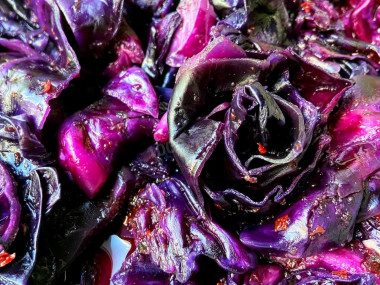
Anticipating the question, why is all this necessary at all, if there is red cabbage rich in anthocyanin. And the answer to this question is very simple. For all its usefulness, the fiber of red cabbage is very coarse, and even after pickling, not everyone can handle it, and has more contraindications than white cabbage, especially for people suffering from gastrointestinal diseases.
The kimchi dish has not been exotic in our country for a long time and many people liked its sharpness and piquancy, stimulating appetite and even its anti-hangover effect; a great addition to any side dish, any kind of meat, poultry, fish.
Many Russian housewives have not only mastered the original recipe from Russified Koreans, but also strive to improvise from available improvised seasonal products, enriching their diet with fermented vegetables and fruits.
The idea of fermentation is to suppress the vital activity of pathogenic bacteria and make lactobacilli useful to humans develop in an artificially created favorable environment for them, due to salt and sugar at a temperature of 20 to 30 degrees. In another way, we can say that fermentation is a controlled process of rotting under certain conditions. To start the fermentation process, you need a certain amount of salt, 2-3% of the total weight of vegetables and water included in the recipe. Unlike salting and pickling, which suppress all types of bacteria by regulating salt and acid, fermentation, thanks only to beneficial bacteria, changes the original products, making the fiber softer, giving a new texture, aroma and taste. When the necessary taste qualities are achieved, fermentation is stopped by lowering the temperature, removing the product in the cold.
Eastern wisdom, reflecting all the importance, significance, usefulness, and most importantly, the availability of fermented vegetables, says: "Nani wanakutomo ko no mono" - even if there is nothing on the table except rice, your house will be a full bowl as long as there are pickles.
Caloric content of the products possible in the composition of the dish
- Honey - 400 kcal/100g
- Garlic - 143 kcal/100g
- Daikon - 21 kcal/100g
- Hot capsicum - 40 kcal/100g
- Salt - 0 kcal/100g
- Water - 0 kcal/100g
- White cabbage - 28 kcal/100g
- Boiled white cabbage - 21 kcal/100g
- Anchan Blue Tea - 35 kcal/100g

